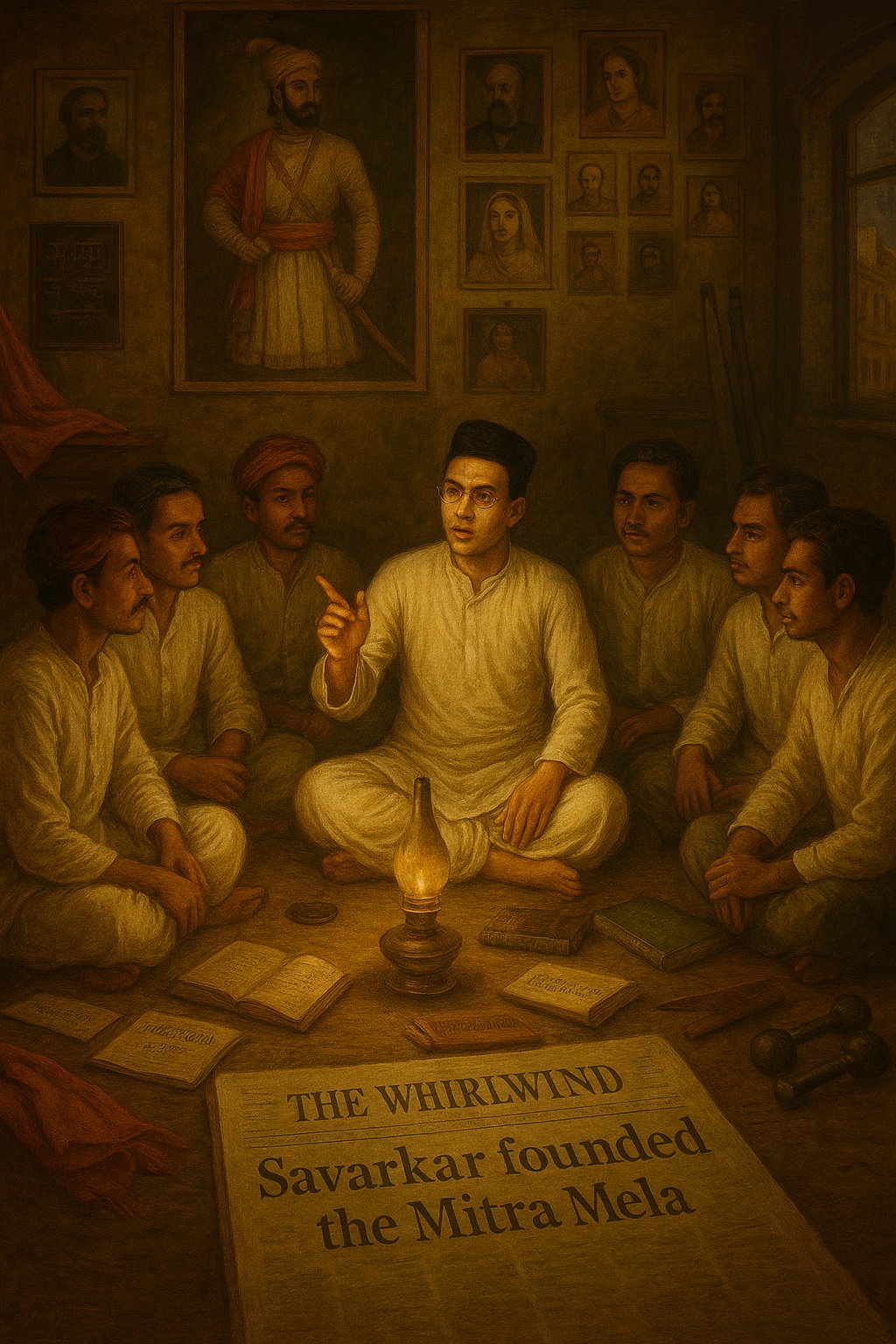In the closing years of the 19th century, a sixteen-year-old Vinayak Damodar Savarkar ignited a spark of revolution by founding Mitra Mela in Nashik, Maharashtra. Conceived in 1899, the group was more than just a circle of friends—it was a secret society devoted to India’s absolute political independence from British rule. Inspired by Mazzini’s Young Italy and the Carbonari, Mitra Mela embodied the fusion of patriotic fervor, Hindu cultural pride, and strategic planning.
The Mela began as a front for the Rashtrabhakta Samuha and conducted weekly meetings on weekends. These gatherings involved literary discussions, debates, and lectures—initially on general topics, but soon increasingly political under Savarkar’s fiery leadership. He believed revolution was no casual affair; it required intellectual depth and moral courage. “One must strike at the root of the poisonous tree,” he said, urging his peers to prepare for armed struggle rather than passive resistance.
Mitra Mela’s ideological commitment was hidden beneath vague objectives like “all-round development.” Members were selected discreetly and pledged secrecy. Their activities ranged from discussions on language and Vedanta to rigorous physical training and strategic planning for insurrection. Coded rituals and symbols fortified internal cohesion, while essay writing and public speaking prepared them intellectually.
Savarkar emphasized both activism and academics. He even tutored members in subjects they struggled with, ensuring their education didn’t falter. Through the Mela young minds were transformed into committed revolutionaries.
By 1904, Mitra Mela evolved into the Abhinav Bharat Society, expanding its reach to major Indian cities and even London. But its soul – nurturing revolution through knowledge, discipline, and patriotic spirit – remained intact. Mitra Mela laid the ideological groundwork for later revolutionary organizations, making it a cornerstone of India’s militant nationalist awakening.
Sources:
KEER, Dhananjay. 1988. Veer Savarkar. Third Edition. (Second Edition: 1966). Popular Prakashan: Bombay (Mumbai).
SAMPATH, Vikram. 2019. Savarkar (Part 1). Echoes from a forgotten past. 1883-1924. Penguin Random House India: Gurgaon.
SRIVASTAVA, Harindra. 1983. Five stormy years: Savarkar in London (1906-1911) – A centenary salute to V.D. Savarkar. Allied: New Delhi.


Leave a Reply